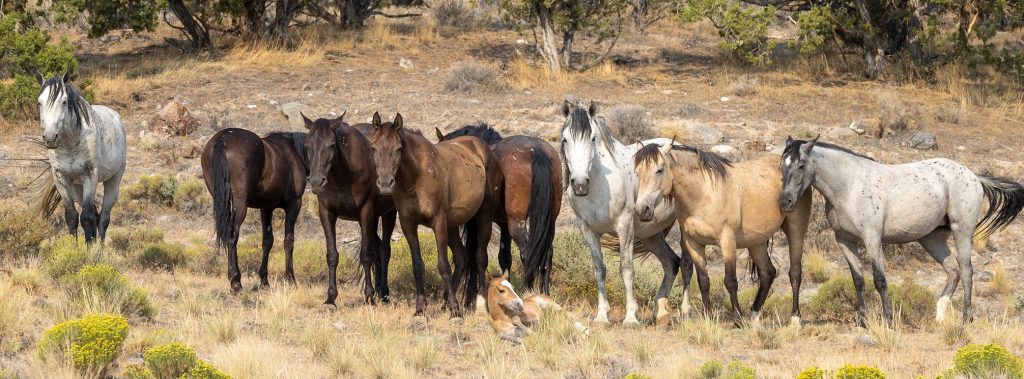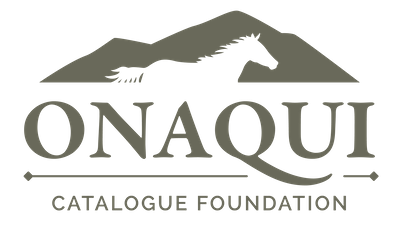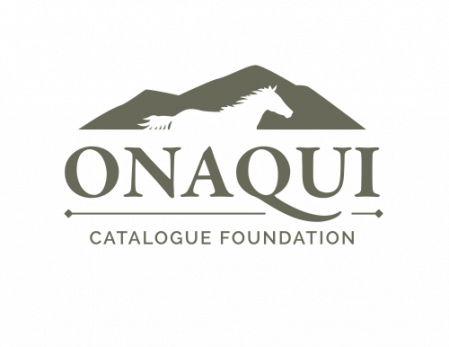About the Herd Catalogue

Why keep a database of the Onaqui horses?
The Onaqui Herd Management Area is a common place for photo-tourism and many people visit Utah every year explicitly to see the Onaqui horses. However, much of the information about the horses is known through word-of-mouth. As a result, many of the horses have multiple local names and visitors often know little about the social structure of the horses they are visiting. The database is a way of concentrating information in one place and providing updates on horses to people worldwide.
What are the ID tags and why are they used?
The ID tags provide a unique identifier for each horse. While local names are sometimes used the ID numbers can be easily searched for and provide an unbiased identifier for each horse. Our goals for the catalogue is that this information can be used in what has been coined “citizen science” where everyone who visits the herd can submit their own observational data. This data could then be accessed and be used by researchers globally. Information on ID notation can be found in this PDF.
How can I help expand the database?
You can send in photos for use in the database by filling out this form. All photos help!
If you have any questions, e-mail us at info@onaquicatalogue.org. Information from locals and visitors is extremely important to keeping the catalogue accurate and up to date!
Where is the Onaqui Herd Located?
The Onaqui herd is part of the Onaqui Herd Management Area (HMA) found in the state of Utah, in the United States of America. These are wild horses and do not belong to any individual.
What is a Herd Management Area (HMA)?
An area of land designated for wild horses, managed for population control by the Bureau of Land Management (BLM). Please visit the BLM website for more information about HMA’s and the BLM’s statement on what population control methods they use.
I want to visit, what do I need to know?
Please keep 100 feet distance from the Onaqui wild horses at all times. This is both a recommendation from the Onaqui Catalogue Foundation and also the local Bureau of Land Management. The Catalogue additionally recommends that you keep at least 200 feet from water sources as this is a high stress area. Finally, the Bureau of Land Management indicates that 300 feet should be maintained from new foals. We (OCF) have observed an increase in foal abandonments during high-traffic years when visitors do not respect these rules. Finally, under no circumstances, should you ever pet or feed a wild horse. Check with the local Bureau of Land Management West Desert District, Salt Lake and Fillmore Field Offices for any additional range rules or restrictions that might be in place before you visit. Thank you for helping keep our wild horses, wild!
How do I get involved? What resources are available?
A listing of other organizations involved in the Onaqui is available here. Check out the websites for these organizations for additional resources.
To help with the fertility control program, please see the Wild Horses of America Foundation Facebook page or their website and contact them directly.
You can send comments or questions on herd management to the Salt Lake Field Office of the BLM. Contact information can be found within this press release.
Why Do Some Horses Have Names?
The Onaqui have many visitors, both local and worldwide, and so horses get names on the range that become adopted by many different people.
Why Are the Names Listed?
We collect every name for the horses that we are given because it dramatically aids in the exchange of information. This makes it easier to find horses out on the range and track their status. That is why we record every name. These names are listed in the info section “local names” and included in parentheses next to horse ID tags. Some horses only have one name which is used by many, others have 3 or 4 names, and some horses have none! If you’ve been using a range name for a horse, we invite you to let us know so that we can record it.
How Can I Submit a Name?
If you know the horse’s OCF ID, you can e-mail us at info@onaquicatalogue.org. Or, if you are submitting identification photos or an observation via our online submission forms, you can include the name with your submission.
Why Not Give them Official Names?
A big part of the culture out on our range is the ability of people to discover the horses and decide for themselves what the horses on their public rangelands mean to them. Each person will have had a different experience and the names are reflective of those personal moments. For some, that means a unique name for a horse. For others, that may mean using the name someone else has given a horse. Finally, some may not wish to give horses names at all. We want to preserve that choice for each person and make it clear these horses are for all of the public. You are always welcome to use already known local names, use your own, or use none at all. The horses don’t mind.

